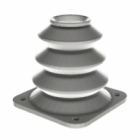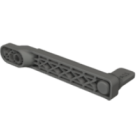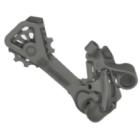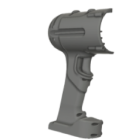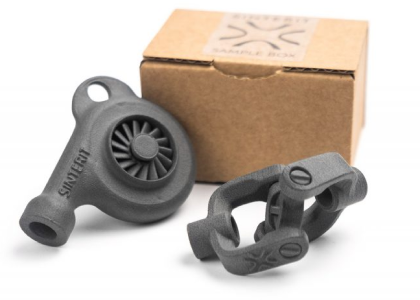Who uses 3D printers? Not just for engineers anymore
Once reserved for R&D labs and high-end industrial facilities, 3D printers are now used by a diverse range of professionals, creators, and organizations. Technologies like Selective Laser Sintering (SLS) have played a major role in this shift — making professional-grade additive manufacturing accessible to smaller teams and even individual creators. As the technology has evolved — becoming more affordable, accessible, and user-friendly — the list of users has expanded dramatically. Today, 3D printing is no longer a niche tool, but a versatile solution integrated into design, manufacturing, education, healthcare, and even everyday hobbies.
Understanding who uses 3D printers gives us a better picture of the technology’s true reach, and reveals why it’s being adopted not just to make things — but to rethink how things are made.
Engineers, designers, and product developers
Perhaps the most well-established users of 3D printers are mechanical engineers, industrial designers, and product development teams. They rely on additive manufacturing for rapid prototyping, functional validation, and accelerating iteration cycles. Whether it’s a snap-fit prototype, ergonomic handle, or a complex enclosure, 3D printing makes it possible to test physical parts in real-world conditions before moving to production. In sectors like automotive, aerospace, and consumer electronics, this is not just useful — it’s essential for staying competitive.
Learn more about SLS 3D printing for prototyping.
Manufacturers and small businesses
On the production side, manufacturers use 3D printing — especially Selective Laser Sintering (SLS) — to create jigs, fixtures, end-use parts, and tooling. Once a prototyping tool, 3D printing is now part of the factory floor, producing durable, isotropic parts with complex geometries that rival injection molding in both precision and repeatability. For small businesses, 3D printing offers a low-barrier entry into customized production — with no need for expensive molds or long lead times.
Boutique manufacturers, spare part providers, and short-run production companies use 3D printers to stay agile, offer bespoke solutions, and reduce dependency on third-party supply chains.
Medical and dental professionals
In healthcare, 3D printers are used by prosthetists, dental labs, and surgeons. Custom-fitted devices such as hearing aids, clear aligners, implants, and surgical guides can be produced faster and with more patient-specific precision than with traditional methods.Using biocompatible materials like PA12 or TPU, medical engineers and dental technicians can create safe, patient-ready components with excellent mechanical strength and flexibility. In prosthetics, 3D printing allows affordable, anatomically optimized solutions, especially important in underserved or remote regions.
More about 3D printing in medical industry & 3D printing for dental applications.
Educators and researchers
Educational institutions are among the most enthusiastic adopters of desktop 3D printers. Universities, technical schools, and even high schools use them to teach engineering principles, foster creativity, and bridge theory with hands-on application. In research, 3D printing accelerates experimentation by enabling customized lab tools, microfluidic chips, or new material testing setups — all produced in-house. Especially in universities equipped with SLS 3D printers, researchers can fabricate strong, high-resolution prototypes or mechanical parts directly from CAD data, significantly reducing turnaround time.
Check out more: 3D printing in education.
Architects and artists
In the creative world, architects use 3D printing to visualize complex structures, present models to clients, and even produce construction-ready components. Meanwhile, artists, sculptors, and fashion designers incorporate 3D printing into their workflows to create intricate forms, wearable pieces, or digitally-sculpted artifacts that would be difficult or impossible to make by hand. With powder-based SLS printing, artists and architects can experiment with intricate lattice structures or textures that would be impossible to fabricate using traditional subtractive methods.
Hobbyists and makers
At the grassroots level, hobbyists and makers use 3D printers for everything from cosplay to home repair. With access to open-source designs, CAD tools, and budget-friendly printers, they experiment, customize, and build their own projects with a level of empowerment that no other tool has offered before. It’s not uncommon to see garage workshops with fully functioning FDM printers next to soldering irons and power tools.
Government, defense, and NGOs
Beyond the private sector, defense agencies and government bodies also make use of 3D printing. Field repair kits, unmanned drone parts, or training aids can be produced on demand. Portable or field-deployable SLS printers are increasingly used in remote missions, allowing teams to print spare parts and tools directly in challenging environments. NGOs and humanitarian projects also deploy 3D printers in developing regions to create medical devices, educational tools, or spare parts in areas with limited infrastructure.
Summary
So, who uses 3D printers? The answer spans industries, professions, and goals. From a high school student printing a science project, to an aerospace engineer building satellite components, the appeal lies in the same core benefit: the power to create, iterate, and solve problems — directly, locally, and on demand.
As the technology continues to evolve, this user base will only grow. And that’s what makes 3D printing not just a tool — but a transformation in how we design and produce across every scale.
Explore also
- What is print 3D? Concept of 3D printing
- What does “3D printed” mean?
- Example of 3D printing
- How does 3D printing work?
- Slicing in 3D printing
- What do you need for 3D printing?
- 3D printing benefits
- Is 3D printer dangerous? Understanding the real risks
- 3D printing issues
- 3D printing history
- 3D printing facts
- Where 3D printing is used
- 7 common 3D printing myths
Related categories
 Austria
Austria  Bosnia and Herzegovina
Bosnia and Herzegovina  Bulgaria
Bulgaria  Croatia
Croatia  Czech Republic
Czech Republic  Denmark
Denmark  Estonia
Estonia  Finland
Finland  France
France  Germany
Germany  Greece
Greece  Hungary
Hungary  Ireland
Ireland  Italy
Italy  Latvia
Latvia  Lithuania
Lithuania  Poland
Poland  Portugal
Portugal  Romania
Romania  Slovakia
Slovakia  Slovenia
Slovenia  Spain
Spain  Sweden
Sweden  Switzerland
Switzerland  United Kingdom
United Kingdom  Ukraine
Ukraine  China
China  Hong Kong
Hong Kong  India
India  Israel
Israel  Japan
Japan  Malaysia
Malaysia  Philippines
Philippines  Saudi Arabia
Saudi Arabia  South Korea
South Korea  Taiwan
Taiwan  Thailand
Thailand  Turkey
Turkey  United Arab Emirates
United Arab Emirates  Egypt
Egypt  South Africa
South Africa  Tunisia
Tunisia  Canada
Canada  Mexico
Mexico  United States
United States  Brasil
Brasil  Colombia
Colombia  Australia
Australia  New Zealand
New Zealand 



